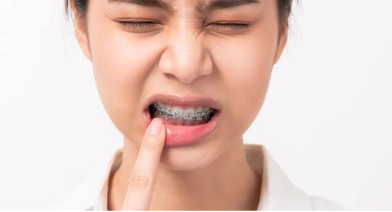When it comes to orthodontic treatment, braces are often surrounded by myths and misconceptions that can deter people from seeking the smile they’ve always wanted. Understanding the facts about braces can help you make informed decisions and set realistic expectations. In this article, we debunk the top misconceptions about braces and provide you with the real deal.
What are Braces?
Dental braces, also known as orthodontic braces, are devices used to straighten teeth and correct various orthodontic issues. Traditional metal braces work by using metal brackets and archwires that interact to gradually align teeth. Orthodontists undergo extensive training, including graduating from dental school and completing a specialized residency in orthodontics. While they are commonly associated with children and teens, adult braces are also quite prevalent. In fact, about 20% of orthodontic patients in the United States are over the age of 18. Braces are typically placed by orthodontists, but some general dentists also offer them. These devices are designed to address a wide range of orthodontic problems, including misaligned teeth, overcrowding, and bite issues. By applying continuous pressure over time, braces gradually move teeth into their desired positions, resulting in a healthier and more aesthetically pleasing smile.

1. Braces Are Only for Kids
Misconception: Many believe that braces are only for children or teenagers.
Fact: Orthodontic treatment is effective for patients of all ages. Adults can benefit from braces just as much as children. Both children and adults seek orthodontic treatment to correct issues like crooked teeth, which can improve both appearance and oral health. Advances in orthodontic technology, including clear aligners and ceramic braces, have made it easier for adults to achieve a straighter smile without drawing too much attention.
2. Braces Are Too Painful

Misconception: Some people think that braces are extremely painful and uncomfortable.
Fact: While it’s true that there might be some discomfort, particularly after adjustments, modern braces are designed to be more comfortable than ever. Over-the-counter pain relievers and dental wax can help manage any discomfort during the adjustment period.
3. Braces Will Take Years to Work
Misconception: Many assume that braces always require several years to produce results.
Fact: The duration of orthodontic treatment varies based on individual needs. While complex cases may require longer treatment, many patients achieve their desired results in less than two years. Clear aligners often offer faster results for specific issues.
4. Braces Are Just for Aesthetics, Not Orthodontic Treatment

Misconception: People often think braces are purely for cosmetic reasons.
Fact: While braces do improve the appearance of your smile, they also address functional issues such as bite problems, overcrowded teeth, and misalignment. Correcting these issues can enhance oral health, improve chewing, and even alleviate jaw pain.
Benefits of Orthodontic Treatment
Orthodontic treatment offers numerous benefits for individuals with misaligned teeth, overcrowding, or bite problems. Some of the most significant advantages of orthodontic treatment include:
Improved Oral Health: Straightening teeth makes them easier to clean, reducing the risk of tooth decay and gum disease. Proper alignment allows for better brushing and flossing, which are crucial for maintaining good oral hygiene.
Enhanced Aesthetics: A straighter smile can significantly boost your self-confidence and overall appearance. Whether you opt for traditional metal braces, ceramic braces, or clear aligners, the end result is achieving the perfect smile.
Better Functionality: Correcting bite issues can improve chewing and speaking abilities. Misaligned teeth can cause chronic pain and discomfort, but orthodontic treatment can alleviate these issues by ensuring your teeth and jaws are properly aligned.
Prevention of Future Dental Problems: Addressing orthodontic issues early can prevent more severe problems down the line. For instance, correcting overcrowding can prevent tooth decay and gum disease, while aligning the bite can reduce wear and tear on your teeth.
Long-Term Investment: While the initial cost of braces might seem high, the long-term benefits far outweigh the expense. Investing in orthodontic treatment can save you from costly dental procedures in the future and contribute to better overall oral health.
Orthodontic treatment is not just about achieving a beautiful smile; it’s about enhancing your oral health and quality of life. If you’re considering braces, consult with an orthodontist to explore the best options for your needs.
Types of Braces
Exploring Different Types of Braces

When it comes to straightening teeth, there are several types of braces available, each with its own unique features and benefits. Understanding these options can help you choose the best fit for your needs:
Traditional Metal Braces: These are the most common type of braces and are known for their durability and effectiveness. Made of stainless steel, traditional metal braces consist of brackets, wires, and rubber bands that work together to move teeth into their desired positions. Traditional metal braces work by using metal brackets and archwires that interact to gradually align teeth. Despite their visibility, they remain a popular choice due to their reliability.
Lingual Braces: These braces are attached to the back of the teeth, making them invisible from the front. Lingual braces provide the same benefits as traditional braces but are hidden from view, offering a great solution for those concerned about aesthetics.
Invisalign Braces: These clear, removable aligners are custom-made to fit each patient’s teeth. Invisalign braces are popular for their convenience and minimal impact on daily life. They can be taken out for eating and cleaning, providing flexibility while still effectively straightening teeth.
Self-Ligating Braces: Using a special type of bracket that allows the wire to slide freely, self-ligating braces reduce the need for frequent adjustments. This can result in shorter treatment times and fewer visits to the orthodontist, making them a convenient option for busy individuals.
Each type of braces has its own set of advantages, so it’s important to consult with your orthodontist to determine which option is best suited for your specific needs.
Orthodontic Treatment Options
When it comes to orthodontic treatment, there are several options available to suit different needs and preferences. Traditional metal braces are the most common and are known for their effectiveness in straightening teeth. These braces consist of metal brackets and wires that are adjusted periodically to move teeth into place. For those seeking a more discreet option, ceramic braces are a popular choice. Made of clear or tooth-colored materials, ceramic braces blend in with the teeth, making them almost invisible. Lingual braces offer another invisible option, as they are placed on the back of the teeth, hidden from view. Clear aligners, such as Invisalign, are also a favored choice for their convenience. These removable aligners can be taken out for eating and cleaning, providing flexibility while still effectively straightening teeth. Each type of treatment has its own unique benefits and drawbacks, so it’s important to consult with an orthodontist to determine the best option for your specific needs.
5. You Can’t Eat Your Favorite Foods with Braces
Misconception: A common belief is that braces mean giving up all your favorite foods.
Fact: While you’ll need to avoid sticky and hard foods that can damage braces, it’s important to note that these foods can also lead to broken braces, causing discomfort and requiring prompt repairs. Many of your favorite foods are still on the menu. Soft fruits, pasta, and dairy products are generally safe and can be enjoyed throughout your treatment.
6. Braces Require Extensive Maintenance
Misconception: Some think that braces require an excessive amount of care and maintenance.
Fact: Proper oral hygiene is essential with braces, but it’s not overly complicated. Regular brushing, flossing, and routine visits to your orthodontist are sufficient to keep your braces and teeth in good condition.
7. Braces Will Leave Permanent Marks on Your Teeth

Misconception: There’s a concern that braces will leave permanent marks or stains on your teeth.
Fact: If proper oral hygiene is maintained, braces should not leave permanent marks. Regular cleaning and avoiding certain foods can prevent staining. Maintaining oral hygiene is also crucial to prevent tooth decay. If any discoloration occurs, it typically fades after braces are removed.
8. Traditional Metal Braces Are Outdated Technology
Misconception: Some believe that braces are outdated compared to newer orthodontic technologies.
Fact: Braces have evolved significantly over the years. Traditional metal braces work by using metal brackets and archwires that interact to gradually align teeth. Advancements have made modern braces more effective and user-friendly compared to older designs. Modern braces are smaller, more comfortable, and more efficient than their predecessors. They also complement other technologies like digital imaging and customized treatment plans.
9. Braces Will Affect Your Speech Permanently

Misconception: There’s a belief that braces will permanently affect your ability to speak clearly.
Fact: While you might experience some temporary speech changes when you first get braces, most people adjust quickly. Any initial difficulties typically resolve within a few weeks as you become accustomed to the braces.
10. You Don’t Need to Follow Your Orthodontist’s Instructions
Misconception: Some think they can skip following their orthodontist’s guidelines without consequences.
Fact: Adhering to your orthodontist’s instructions is crucial for the success of your treatment. This includes wearing rubber bands, maintaining good oral hygiene, and attending regular appointments. It is also important to follow the recommended duration to wear braces, as this can vary based on individual needs. Following these guidelines helps ensure that your treatment progresses as planned and avoids unnecessary delays.
Eating and Playing Sports with Braces
Tips for Eating and Playing Sports Safely
Wearing braces doesn’t mean you have to give up your favorite activities or foods, but it does require some extra care to avoid damaging your braces or injuring your mouth. Here are some practical tips to help you navigate eating and playing sports with braces:
Eating: While wearing braces, it’s important to avoid hard, crunchy, or sticky foods that can damage the brackets and wires. Foods like popcorn, nuts, and chewy candies should be off-limits. Instead, opt for softer foods that are easier on your braces, such as yogurt, scrambled eggs, and mashed potatoes. Cutting fruits and vegetables into smaller pieces can also make them easier to eat without risking broken brackets.
Playing Sports: If you’re active in sports, wearing a mouthguard is essential to protect your teeth and braces from injury. Choose a mouthguard specifically designed for braces, as they provide extra space to accommodate the brackets and wires. This will help prevent damage to your braces and reduce the risk of oral injuries during physical activities.

Oral Hygiene: Maintaining good oral hygiene is crucial when you have braces. Brush your teeth after every meal to remove food particles that can get stuck in your braces. Flossing daily is also important, and using a floss threader can make it easier to clean between your teeth and braces. Additionally, rinsing with a fluoride mouthwash can help prevent tooth decay and keep your mouth healthy.
By following these tips, you can enjoy your favorite foods and activities while keeping your braces in good condition and maintaining your oral health.
Cost and Investment
The cost of braces can vary widely depending on the type of braces and the complexity of the treatment. On average, traditional metal braces can cost around $5,000. However, many orthodontists offer payment plans and financing options to make braces more affordable. It’s important to view braces as a long-term investment in your oral health and overall well-being. Straightening teeth can prevent future dental issues, improve oral hygiene, and boost self-confidence. While the initial cost may seem significant, the benefits of having a healthy, straight smile can last a lifetime.
Choosing the Right Orthodontist
How to Select the Best Orthodontist for Your Needs
Choosing the right orthodontist is a critical step in ensuring the success of your orthodontic treatment. Here are some key factors to consider when selecting an orthodontist:
Check Credentials: Ensure that the orthodontist is licensed and certified by the American Board of Orthodontics. This certification indicates that the orthodontist has completed the necessary education and training to provide high-quality orthodontic care.
Experience: Look for an orthodontist with experience in treating patients with similar orthodontic issues. An experienced orthodontist will be better equipped to handle complex cases and provide effective treatment plans tailored to your needs.
Technology: Orthodontic technology has advanced significantly, and choosing an orthodontist who uses the latest technology can enhance your treatment experience. Look for practices that offer digital X-rays, 3D imaging, and other modern tools that improve accuracy and efficiency in treatment planning.
Communication: Effective communication is essential for a positive orthodontic experience. Select an orthodontist who takes the time to explain your treatment options, answer your questions, and address any concerns you may have. A good orthodontist will make you feel comfortable and confident in your treatment plan.
By considering these factors, you can find an orthodontist who meets your needs and provides the best possible care for your orthodontic treatment.
Retainers and Post-Treatment Care
Once your braces are removed, the journey to a perfect smile isn’t quite over. To ensure your teeth stay in their new positions, you’ll need to wear a retainer. Typically, retainers are worn full-time for the first few months and then only at night. This helps maintain the alignment achieved during your braces treatment. Additionally, maintaining good oral hygiene is crucial. Regular brushing and flossing will keep your teeth and gums healthy. It’s also important to continue regular check-ups with your orthodontist to monitor your teeth and ensure they remain in their correct positions. With proper post-treatment care, you can enjoy the benefits of your new smile for years to come.
Bonus misconceptions
How Orthodontic Technology Has Evolved
Misconception: Braces are the same now as they were decades ago.
Fact: Orthodontic technology has seen tremendous advancements. Traditional metal braces work by using metal brackets and archwires that interact to gradually align teeth. Modern braces are more effective and user-friendly due to advancements such as self-ligating brackets, which reduce friction and treatment time, and 3D imaging for precise treatment planning. These innovations have revolutionized orthodontics, making the process smoother and more effective, enhancing the overall patient experience.
The Impact of Braces on Oral Health Beyond Aesthetics
Misconception: Braces only serve to improve the appearance of your teeth.
Fact: Beyond enhancing your smile, braces play a crucial role in improving oral health. Properly aligned teeth are easier to clean and less prone to cavities and gum disease. Additionally, correcting bite issues can reduce the risk of jaw problems and wear on your teeth. This holistic approach to dental health underscores the comprehensive benefits of orthodontic treatment.
The Role of Retainers in Long-Term Success
Misconception: Once braces are off, your teeth will stay perfectly straight on their own.
Fact: Retainers are essential for maintaining the results achieved with braces. Teeth have a natural tendency to shift over time, and retainers help to keep them in their new positions. Failing to wear your retainer as prescribed can lead to a relapse of orthodontic issues, negating the progress made during treatment.
The Importance of Regular Orthodontic Check-Ups
Misconception: You only need to visit your orthodontist at the end of your treatment.
Fact: Regular check-ups throughout your orthodontic treatment are critical. These visits allow your orthodontist to monitor progress, make necessary adjustments, and address any issues that may arise. Staying on top of these appointments ensures that your treatment stays on track and helps to achieve the best possible outcome.
Conclusion
Understanding the truth behind these common misconceptions can help you make informed decisions about orthodontic treatment. Braces have advanced significantly, and today’s options offer comfort, effectiveness, and flexibility for patients of all ages. If you’re considering braces or have concerns about treatment, consult with a qualified orthodontist to get accurate information tailored to your specific needs.x
For more information on braces and orthodontic care, contact Andros Orthodontics today at (509)-792-1008 or frontdesk@androsorthodontics.com. We’re here to help you achieve the smile you’ve always wanted!


